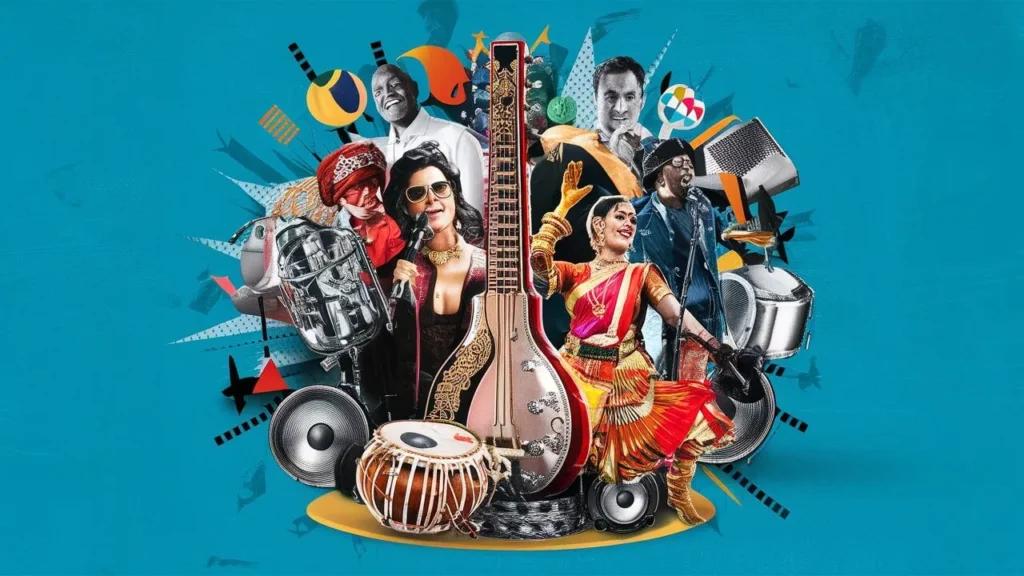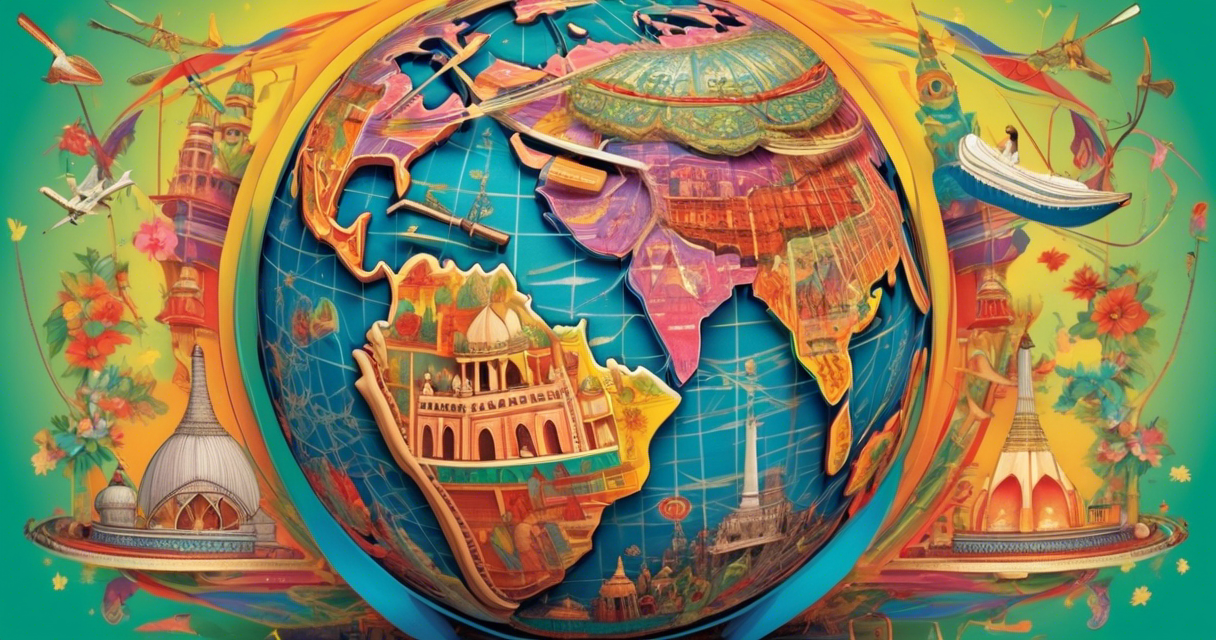Indian music has long transcended geographical boundaries, finding a significant presence and influence in the global diaspora. As Indian communities have settled around the world, their musical traditions have adapted, merged with other styles, and enriched the cultural landscapes of their new homes. This article delves into the global influence of Indian music in the diaspora and how it has been both preserved and transformed in various contexts.
The Spread of Indian Music Across the Globe
**1. **Historical Context and Migration
Overview: The migration of Indians across the world, driven by historical events and economic opportunities, has played a crucial role in spreading Indian music globally.
Historical Events:
- Colonial Era: Indian labor migration to various British colonies, including Africa, the Caribbean, and Southeast Asia, brought Indian music to new regions.
- Post-Independence Migration: The movement of skilled professionals and their families to countries like the United States, Canada, and the UK introduced Indian music to new audiences.
Examples:
- Indian Music in Africa: The influence of Indian music in countries like Kenya and South Africa due to the historical presence of Indian communities.
- Indian Music in the UK: The arrival of Indian migrants in the UK during the 1960s and 1970s brought Bollywood music and classical traditions to a European audience.

**2. **Indian Music in the Diaspora Communities
Overview: Indian communities abroad have maintained and adapted their musical traditions, creating vibrant cultural scenes that celebrate Indian music while integrating local influences.
Diaspora Communities:
- North America: Indian music has become a significant part of cultural festivals, community events, and educational programs in countries like the US and Canada.
- Europe: Indian music enjoys popularity in countries with large Indian populations, such as the UK, Germany, and the Netherlands.
Examples:
- Bollywood Nights in the US: Community events and festivals that showcase Bollywood music and dance.
- Classical Music Schools in Canada: Institutions dedicated to Indian classical music, promoting its practice and education.
Adaptation and Fusion of Indian Music
**1. **Fusion with Western Music Genres
Overview: Indian music has increasingly fused with Western genres, creating new hybrid styles that reflect the diverse musical influences of the diaspora.
Trends:
- Bollywood and Pop Fusion: Integration of Bollywood music with Western pop and electronic dance music.
- Classical and Jazz Fusion: Collaboration between Indian classical musicians and jazz artists to create innovative compositions.
Examples:
- A.R. Rahman: Renowned for blending Indian classical music with Western pop and electronic elements, achieving global success.
- Ranjit Barot: Known for his work in jazz fusion and collaborations with international artists.
**2. **Adaptation to Local Cultures
Overview: Indian music has adapted to the cultural contexts of its diaspora communities, incorporating local musical elements and styles.
Trends:
- Regional Influences: Indian musicians integrating local musical styles and instruments into their compositions.
- Cultural Adaptation: Incorporation of themes and lyrics that resonate with the local audience while retaining Indian musical traditions.
Examples:
- Indian Music in the Caribbean: Fusion of Indian rhythms with Caribbean calypso and reggae.
- Indian-American Music: Use of American musical styles and themes in Indian music compositions.
Impact of Indian Music on Global Music Scenes
**1. **Influence on Popular Music
Overview: Indian music has influenced various global music genres, contributing to the diversification and enrichment of popular music.
Influences:
- Bollywood Music: Bollywood soundtracks have inspired international pop artists and music producers.
- Indian Instruments in Western Music: Use of Indian instruments like the tabla and sitar in Western pop and rock music.
Examples:
- The Beatles’ Influence: Incorporation of Indian instruments and sounds in The Beatles’ music, influenced by their collaboration with Ravi Shankar.
- Music by Major Lazer: Collaboration with Indian artists and incorporation of Indian musical elements in global dance music hits.
**2. **Promotion of Cultural Exchange
Overview: Indian music in the diaspora has fostered cultural exchange, promoting greater understanding and appreciation of Indian culture worldwide.
Cultural Exchange:
- Music Festivals: International music festivals showcasing Indian music alongside global genres.
- Collaborations: Cross-cultural collaborations between Indian musicians and artists from different countries.
Examples:
- Global Music Festivals: Events like the Montreux Jazz Festival featuring Indian music performances.
- Collaborations with International Artists: Partnerships between Indian musicians and global stars, enhancing cultural dialogue.
The Future of Indian Music in the Diaspora
**1. **Emerging Trends and Innovations
Overview: The future of Indian music in the diaspora promises continued innovation and growth, driven by technological advancements and evolving musical trends.
Trends:
- Digital Platforms: Expansion of Indian music through streaming services and social media, reaching a broader audience.
- Innovative Collaborations: New collaborations between Indian musicians and international artists, exploring novel musical styles.
Examples:
- Streaming Success: Indian music gaining popularity on global streaming platforms like Spotify and Apple Music.
- Virtual Concerts: Indian artists hosting virtual performances and collaborations with international musicians.
**2. **Preservation and Promotion of Traditional Music
Overview: While Indian music in the diaspora continues to innovate, there is also a strong focus on preserving and promoting traditional forms of Indian music.
Efforts:
- Educational Programs: Institutions and programs dedicated to teaching and preserving traditional Indian music.
- Cultural Festivals: Celebrations and festivals that highlight traditional Indian music and its cultural significance.
Examples:
- Indian Music Schools: Institutions offering courses in classical and folk music traditions.
- Cultural Heritage Festivals: Events celebrating traditional Indian music and dance, promoting cultural heritage.
Conclusion
Indian music in the diaspora reflects a rich tapestry of cultural adaptation, innovation, and global influence. As Indian communities continue to evolve and integrate into diverse cultures, their music has adapted and thrived, creating a unique blend of traditional and contemporary sounds. The fusion of Indian music with global genres, its influence on popular music, and its role in cultural exchange highlight the dynamic nature of Indian music in the global context.
The future of Indian music in the diaspora promises further exploration and innovation, offering exciting possibilities for musicians, composers, and audiences worldwide. As Indian music continues to make its mark on the global stage, it will undoubtedly enrich the cultural landscape and foster greater cross-cultural understanding.

